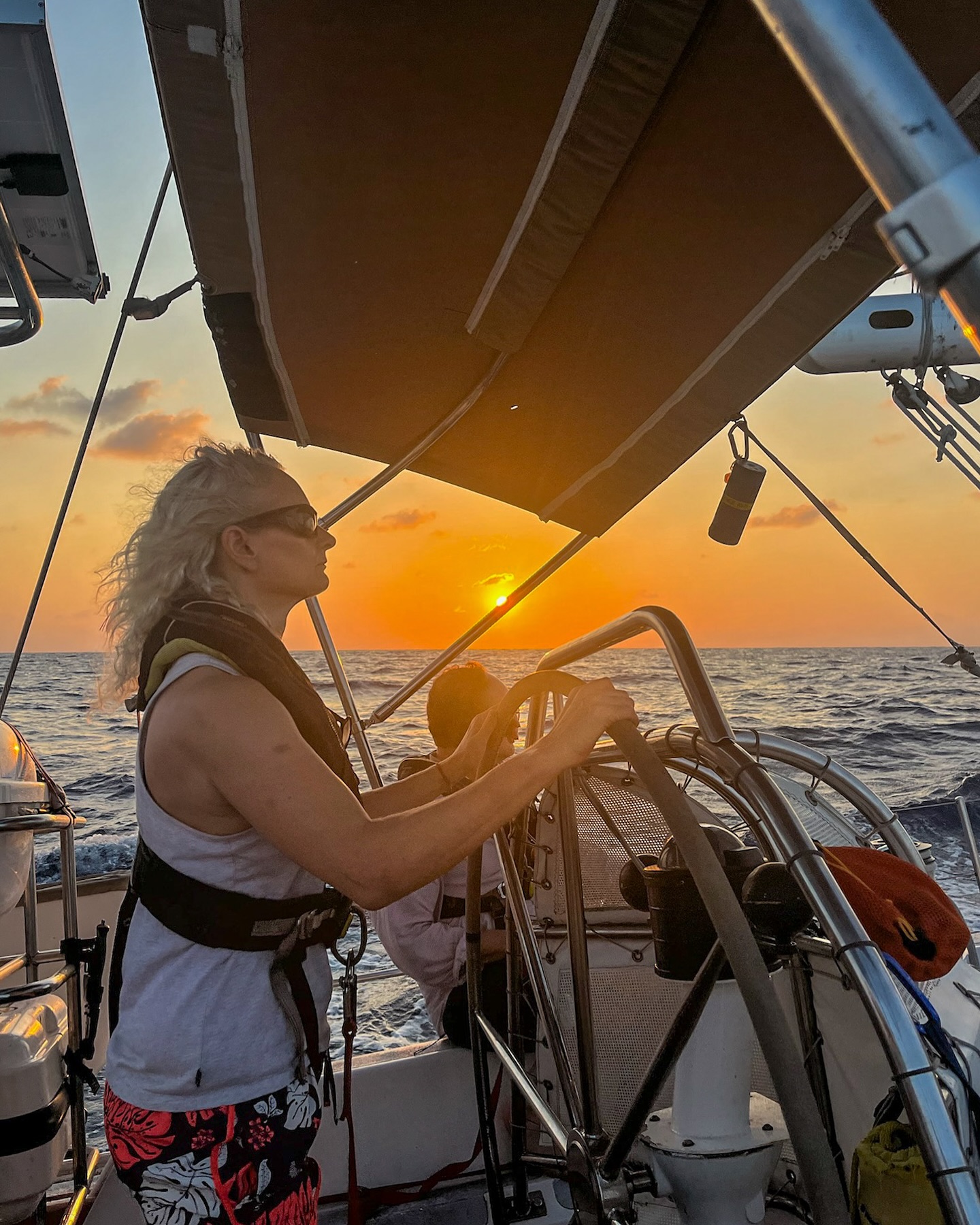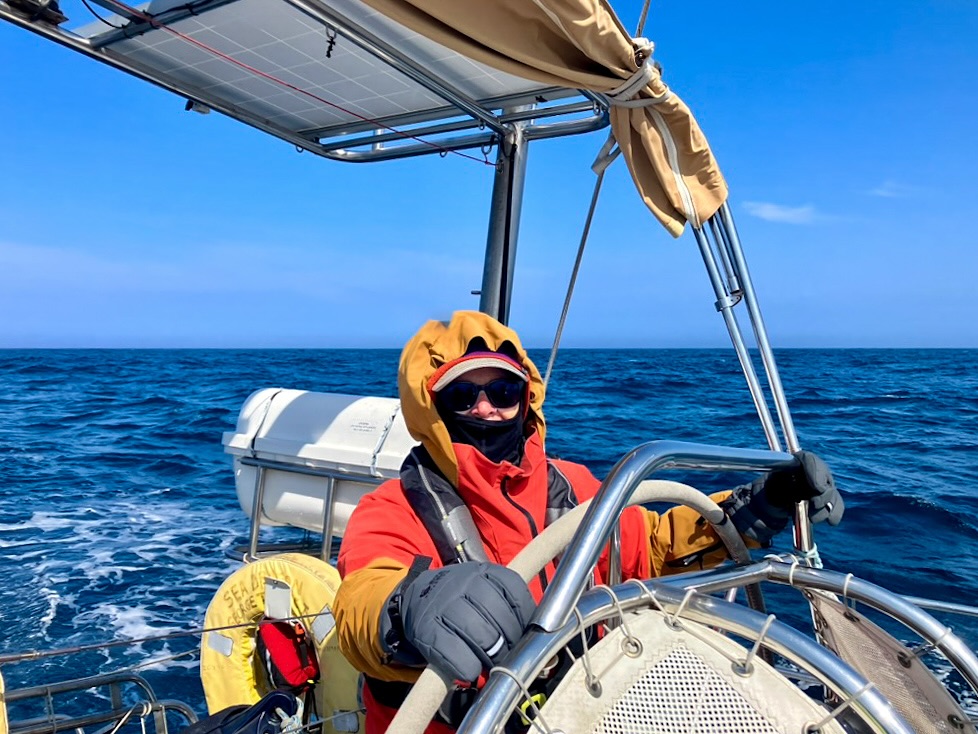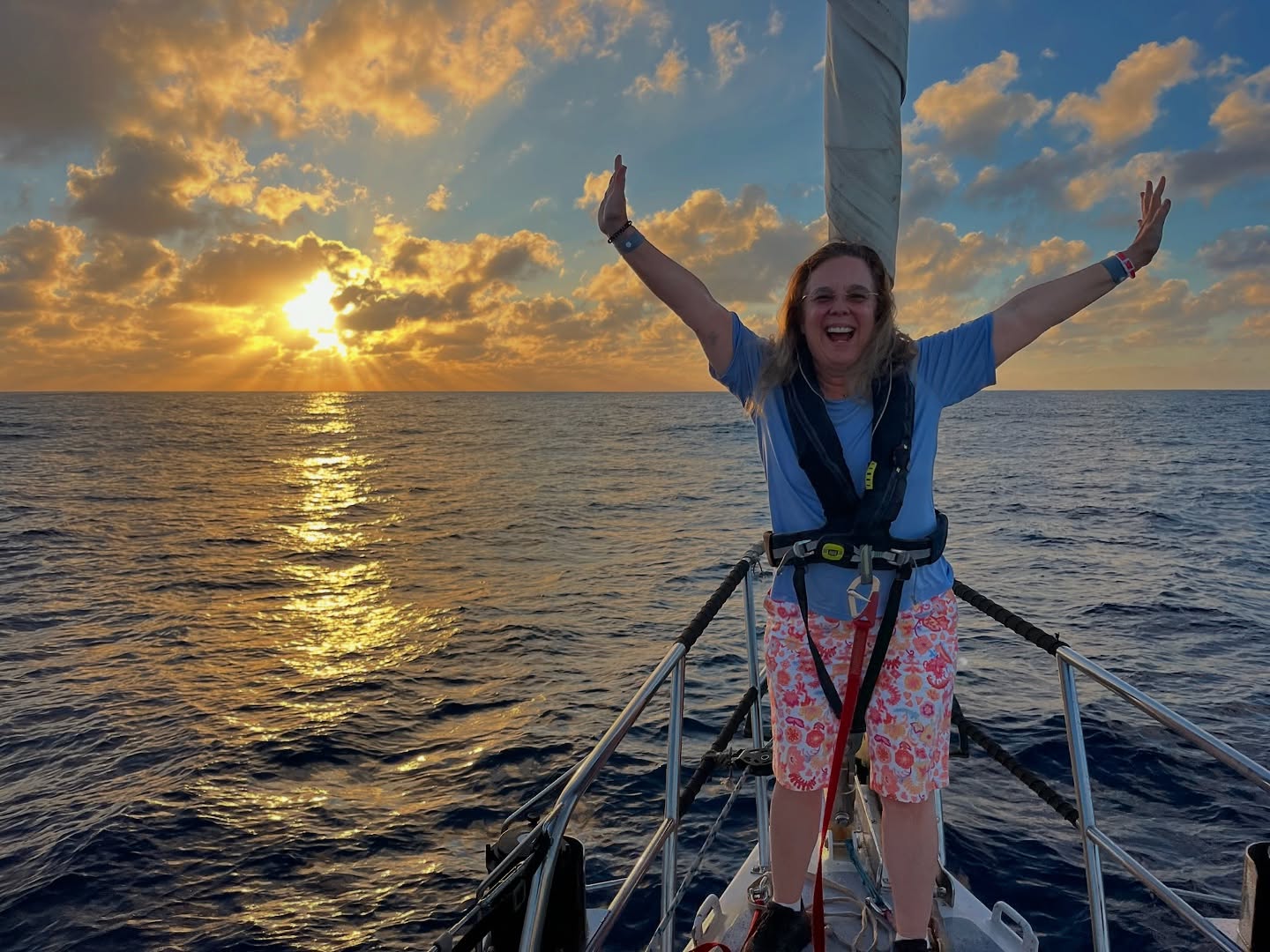This morning we made first contact with the Jaseur Seamount. With a day of quit weather behind us, and an advancing front that promised higher winds we crossed into the Jaseur bank shallow in the early morning hours. Our immediate target was the “reported” pinnacle of 33′ (10m). These reported depths, common on all charts are registered not from the official survey, but from indivuduals later- mineral survey teams, recreatioal boaters and I would say fishermen, but they are reluctanct to share anything!
Charts at sea, really at sea like we are, are reliably unreliable. Soundings and position fixes literally go back to 19th century lead line and sextant…or at least pre-GPS survey ships. This works for finding the entire seamount, but not small feature. The Jaseur survey is even more remarkable. At what should be 3000ft or 1000m of depth, our sounders started recording ranges of 3-400ft! As we began a slow search pattern we could easily see the basic outline of the seamount relative to the chart…but in all the wrong places. Crossing the center line of the bank, a constant stream of 200-250ft ranges began to suggest a pattern of a wide, flat rightly named “bank” with very little evidence of structure. This is not necessarily bad as a healthy habitat could still be a rich garden of coral, sponges and gorgonians wtih all the big fish you would this far out.
By 0400 we had several hours of consistent depth, with some sign that there was a slight rise towards the outer edges of the bank. Looming squall clouds and a grey sky suggested the weather turn was pushing towards us. At 0700 we made a decision to get the dive team in, and get a first look at the actual bottom condition. Sounding 184′ we set the dive team in motion. Diving in a this remote, with almost no information on the underwater conditions and directly off a large boat like Sea Dragon takes planning, a lot of careful execution and lots of contingency.
We put the big boat in a side-ways drifting hold pattern over the depth target. Bill, Jonathan, Chip and Becky began the process of suiting up- a task done hundreds of times before, but not in these conditions. Our AIS transponder was set to “Restricted Maneuverability” with a broad cast message sent out, and VHF “Securite” call on 16- letting any traffic know that we are engaged in dive operations and unable to maneuver. We have seen no boats for 24 hours- or any sign of human life.
Bill was first to splash with an immediate comment of “jeese this is a deep blue”. The water clarity was unbelievable- a deep indigo blue with the far penetration of surface light. At 0815 all four divers descended with a reel connected to a large surface float ball. On the surface we waited- Dale in our circling inflatable, Kraken, and the rest of the team in Sea Dragon- orbiting slowly about 400m off the bouy. The indigo became a rich tourqouise with the bubble streams coming up…and we waited.
Thirty minutes into the dive, the weater began to turn wtih a large squall arriving. Wind goes from 10- 20+ kts in just a few minutes and the waves begin to slowly build.
35 minutes in Dale, leaning over Kraken in his snorkel gear, can actually see them ascending onto their decompression stops. One hour, and we get the first diver on the surface. Now, gettign back into a boat under these conditions with all this gear is not easy. Maneuverying both boats the team removed gear in water and returned via Kraken.
The dive…oh yeah, that 20 minute shot on the bottom… Amazing water clarity at 200′ with an ability to see the surface all the way down to 190′. At 120′ Becky has ultra clear video of Kraken circling overhead like a toy boat. The flat bottom countour was confirmed below. With an almost eerie flatness, that sea bed looked like a plowed field. Almost uniform size chunks of limestone rock were spread out across the bottom. Red barrel sponges, hard coral, brown/green algae were covering the bottom. Several spotted moray, queen triggerfish, small brightly colored fish (Chromis?) all hugged the flat bottom. They were all small- alive and well -particularly the corals, but small. On ascent Bill had a 1m tuna come up from the depths, take a look and then descend away.
Contact made, the team now has the first visual record of the life conditions on the Jasuer bank. In this one, precious 20 minute insight we may have learned a few things. First the charts and depth profiles are so off that we are in true exploration mode. Anything short of an island could be possible here. Second, that flat bottom is troubling. While other explanations are possible, the one we call kept coming back to is “industrial trawling”. In past years, particularly the 1960 forward, fleets of factroy trawlers have been roaming any potential fishing grounds bottom dragging with heavy doors and chains. This flat, rubble strewn bottom looks like you would imagine that. Finally, there is life that is important. These coral are even further south than the Abrolhos Banks and growing deep. Seeing coral that is dependent on sunlight to live at 200′ depth says alot about water clarity.
With 24 hours of weather ahead, we go east looking for shallower spots. 20 minutes and a few hours sonar probbing are a tiny, but important start on understanding this ocean wilderness.
























